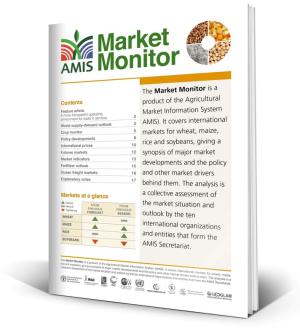Direct links
The Food Security Portal gratefully acknowledges the European Commission (EC) and the Foreign, Commonwealth & Development Office (FCDO) of the Government of the United Kingdom for their financial support of the Ukraine crisis monitoring.
Last update: July 2025
The crisis in Ukraine threatens global food security at a time when global food markets are already struggling with soaring prices, supply-chain disruptions, and a bumpy recovery from the pandemic. Ukraine and the Russian Federation account for more than 30% of global wheat exports, provide around 12 percent of the globally traded supply of food energy in kilo calories, and are breadbaskets to many food import-dependent developing countries in the Middle East, South Asia, and sub-Saharan Africa. Moreover, Russia is a major producer of fertilizer. Any serious disruption of production and exports from these suppliers will drive up prices further and erode food security for millions of people. If governments respond with export restrictions in an effort to keep domestic food prices in check, the impact on food security will be even higher.
In this context, monitoring the impact of the crisis on food security is key. To that end, this page provides several tools to monitor the situation. Here you can monitor production and stocks, track food export restrictions, check food price volatility, and access resources such as the AMIS Market Monitor.
The AMIS Market Monitor December 2025

As we close out 2025, global agricultural markets remain well supplied, while price movements across key commodities have been mixed throughout the year: rice and wheat fell below their year earlier levels, maize held steady, and soybeans strengthened. Much of the year was shaped by uncertainty surrounding trade policies, though November brought renewed optimism, especially regarding trade prospects between China and the United States. Fertilizer prices eased, yet the widening gap between input costs and crop values continues to weigh on demand. With the end of the US federal government shutdown, several reports essential for market transparency were restored. The next edition of the Market Monitor will be published on Friday, 6 February. With best wishes for a successful and prosperous 2026!
Food and Fertilizer Export Restrictions Tracker
The tracker monitors global food and fertilizer export restrictions, showing their impacts on imported calories and comparing current trends to past crises.
Excessive Food Price Volatility Early Warning System
The system monitors excessive volatility in food and fertilizer prices, identifying abnormal fluctuations to provide early warnings that support timely food-security responses.